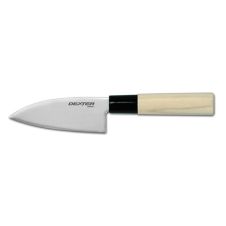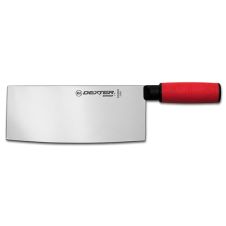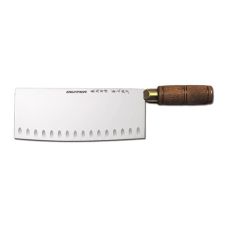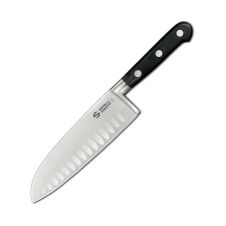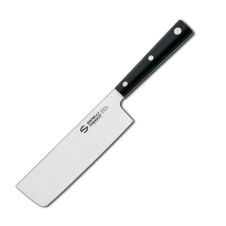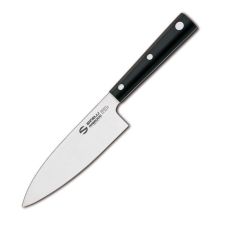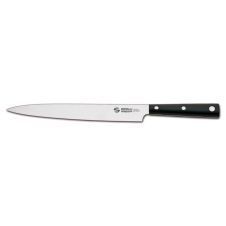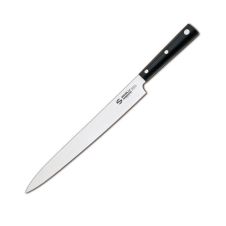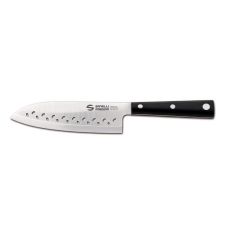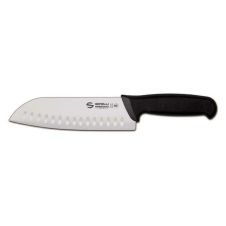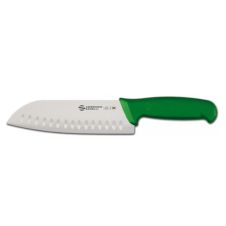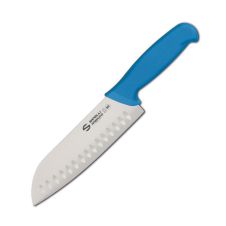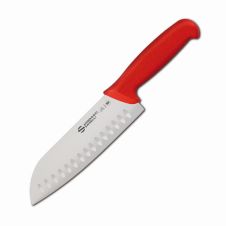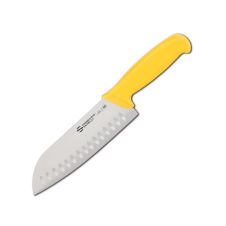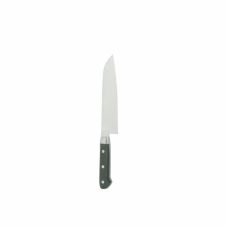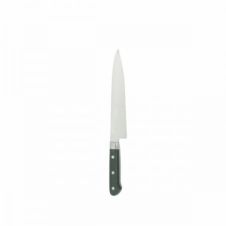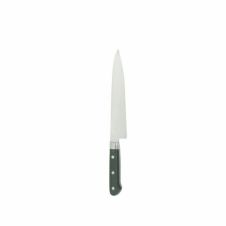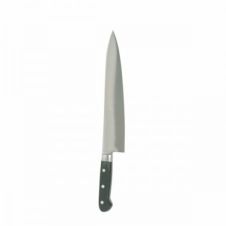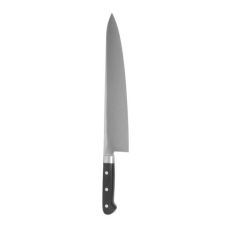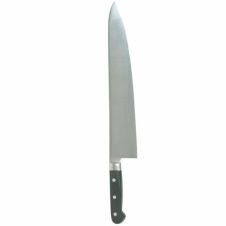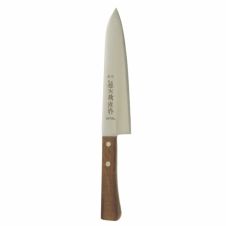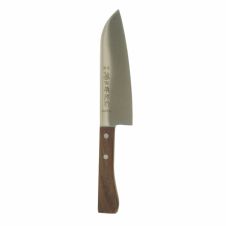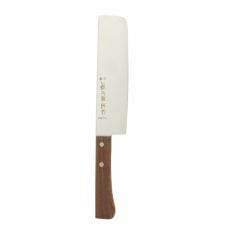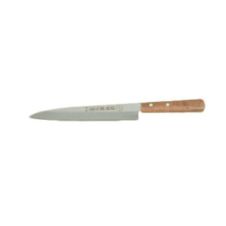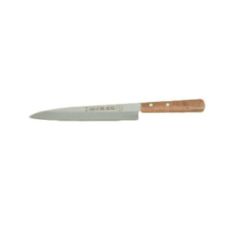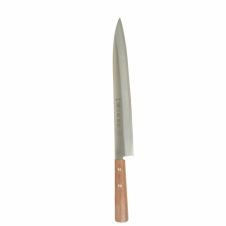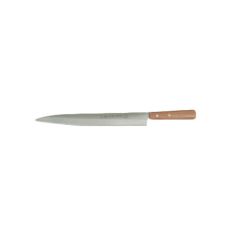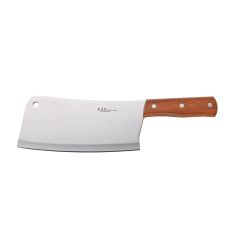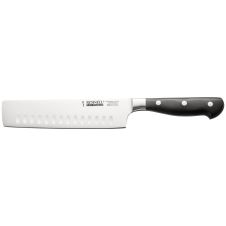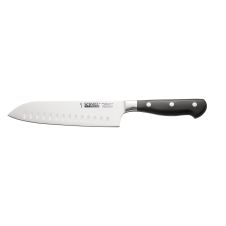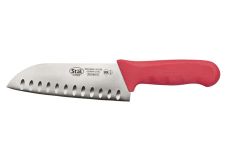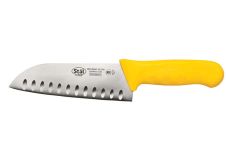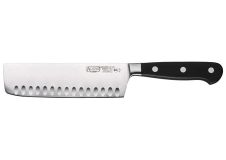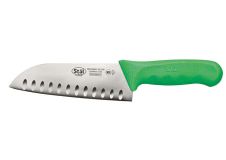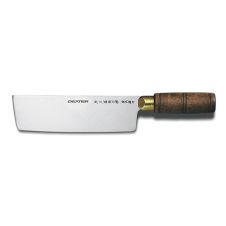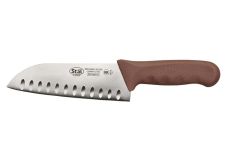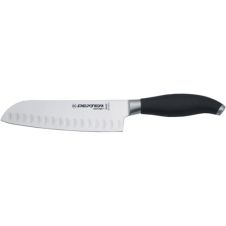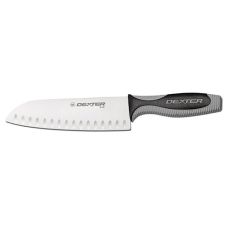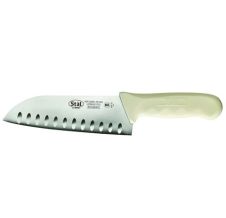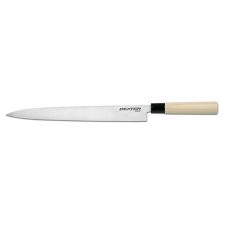Asian Knives
-
Dexter Russell SG5888R-PCP, 8x3¼-Inch Chinese Chef's Knife with Red Sofgrip Handle, NSFSKU: SG5888R-PCP$55.99
-
Ambrogio Sanelli HJ41024B, 9.5-Inch Blade Stainless Steel Sashimi "Yanagi" KnifeSKU: HJ41024B$36.99
-
Ambrogio Sanelli H341.027, 10.5-Inch Blade Stainless Steel Sashimi "Yanagi" KnifeSKU: H341.027$40.99
-
Ambrogio Sanelli H350.016, 6.25-Inch Blade Stainless Steel Santoku Knife with HolesSKU: H350.016$39.99
-
Ambrogio Sanelli S350.018Y, 7-Inch Granton Blade Stainless Steel Santoku Knife, RedSKU: S350.018Y$19.99
-
Thunder Group JAS012180, 7.5x1.75-inch Stainless Steel Japanese Cow Knife, EASKU: JAS012180$101.99
-
Thunder Group JAS012210, 8.25x1.75-inch Stainless Steel Japanese Cow Knife, EASKU: JAS012210$106.99
-
Thunder Group JAS012240, 9.5x1.75-inch Stainless Steel Japanese Cow Knife, EASKU: JAS012240$111.99
-
Thunder Group JAS012300, 11.75x2.125-inch Stainless Steel Japanese Cow Knife, EASKU: JAS012300$128.99
-
C.A.C. KFNK-G72, 7.25-inch Schnell Stainless Steel Nakiri Knife with Granton EdgeSKU: KFNK-G72$24.99
-
C.A.C. KFST-G71, 7.25-inch Schnell Stainless Steel Santoku Knife with Granton EdgeSKU: KFST-G71$21.99

Asian Knives
Asian knives, known for their accuracy and adaptability, bear witness to the East's rich culinary traditions. These knives stand out in cutlery as vital equipment for professional chefs and household cooks. Let's explore the intriguing world of Asian knives, including their distinct characteristics, applications, and creativity in creating these culinary marvels.
The Soul of Asian Knives
Artistry and precision: Asian knives are more than just kitchen equipment; they represent centuries-old Asian culinary traditions. These knives are handcrafted with meticulous attention to detail and a thorough grasp of the cutting art. Consequently, the blades provide unrivaled accuracy and the ability to bring out the best in ingredients.
Asian Knife Varieties
Asian chef's knives come in various designs, each suited to a particular culinary purpose. The following are some of the most often-used Asian knives:
- Santoku Knife: The Santoku knife, also known as the “three virtues” knife, is a multipurpose knife that excels in slicing, dicing, and chopping. Its broad blade and slightly curved edge make it adaptable for various culinary jobs.
- Nakiri Knife: A Japanese vegetable cleaver with a flat edge, the Nakiri knife is ideal for precision vegetable cutting and chopping. It's intended to produce clean, equal slices of vegetables, making it a favorite among chefs who value appearance.
- The Yanagiba knife is a long, thin blade, typically slicing sashimi and other raw fish. Because of its sharpness and single-bevel design, it can make delicate and accurate cuts.
- Deba Knife: This sturdy, thick-spined knife is mainly used for filleting and slaughtering fish. Because of its muscular build, it is excellent for breaking down entire fish.
The Artisanship of Asian Knives
Asian knives result from a marriage of traditional craftsmanship and cutting-edge technology. These Asian kitchen knives are forged with precision and care by skilled craftsmen who frequently use centuries-old processes. The following are essential features of Asian knife-making:
- Materials: Asian knives are often composed of high-carbon stainless steel or layered Damascus steel. These materials have outstanding sharpness, edge retention, and corrosion resistance.
- Hardness: Asian knives are recognized for their toughness, typically rating higher on the Rockwell scale than Western blades. This hardness allows for razor-sharp edges but requires careful maintenance and periodic sharpening.
- Blade Geometry: Asian knives have blade geometry suited for certain cutting methods. Each knife form has a specific role in the kitchen, whether it's the delicate edge of a Yanagiba or the broad, flat edge of a Nakiri.
Asian Knife Artisanship
Asian knives are pieces of art as much as instruments. From the blade's curve to the design and substance of the handle, artisans pay close attention to the more minor details. As a consequence, the knives not only function well, but also fascinate with their visual appeal.
Asian knives are more than just kitchen equipment; they represent culinary traditions, accuracy, and craftsmanship.
These knives are useful in professional and residential kitchens due to their unique efficiency and elegance. Exploring the world of Asian cooking knives may take your culinary adventure to new heights, whether you're a seasoned chef or an aspiring home cook. So, embrace the craftsmanship of Asian cutlery and allow these knives to serve as an extension of your culinary imagination.



